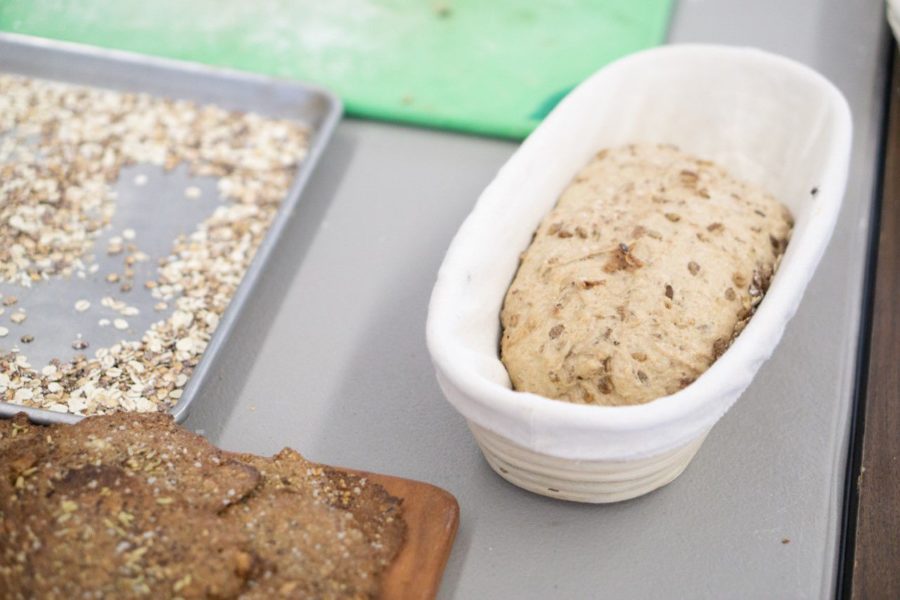A UK student’s defense of cooking at home
February 12, 2020
If you’re like me, the three weeks off of school for winter break coupled with holiday plans with friends and family is enough to completely destroy any sense of routine established in the fall.
I’ve spent the first two weeks of the semester telling myself that I should be doing all the productive things to get my routine back on track (running, walking my dog, going to bed early), but failing because I feel overwhelmed and just plain tired from a busy break. I have to keep reminding myself to tackle one thing at a time.
Baby steps.
One piece of my routine that I’m getting back on track is making and preparing food at home. Preparing food at home can be incredibly easy and even a creative outlet. There are so many things that people never consider preparing at home instead of buying it pre-packaged from the grocery, whether you’re in a dorm room or a house with a full kitchen.
Salad dressings are an easy start. Dressing recipes that simply require mixing ingredients that you already have in your kitchen are all over the internet.
If you like making smoothies at home, buy loose, in-season fruits from the grocery that don’t need packaging, chop them up at home and store them in your own containers in the freezer instead of buying those pre-chopped frozen fruit smoothie mixes. Get creative and find out exactly what you like in a smoothie.
Soup is also a personal go-to when it’s cold outside, especially since it’s so customizable. You can purchase a whole chicken from the farmers market (which is much cheaper than buying individual cuts), boil it in water, and — voila! — you have cooked chicken meat and broth that you can use as the foundation for a cozy homemade soup.
If you’re feeling a little more inspired, you can venture into pasta and bread territory. People seldom think of making these at home on a regular basis, but the inputs are incredibly simple — flour, salt, and eggs.
On top of all this, making your own food can give you some control over the sustainability of your eating habits. For instance, purchasing ingredients like flour or rice in bulk with your own containers eliminates unnecessary plastic packaging. You can also prioritize ingredients with fair trade or organic certifications to support human rights and more traditional agricultural practices.
Another perk of making your own food is avoiding preservatives and extra junk found in processed food like palm oil (which is incidentally found in most every kind of product that you can think of, at great ethical and environmental cost).
Even though we all have YouTube at our fingertips, it’s a much more enriching experience to learn and interact with real people. The Food Connection offers opportunities to learn more about cooking at home in the Learning Kitchen. Chef Tanya hosts regular culinary classes that are free or cheap for students. A wonderful example of this is the Food Connection’s Gathering at the Table partnership with Campus Kitchens which you can learn more about online.
Aside from benefiting the environment, human rights and your wallet, preparing your own food at home can be so empowering and inspiring when you consider the amount of control and gratification it can give you as a consumer. Often, just attempting to make something new at home instills a new sense of gratitude for those in the food chain who already do this regularly. I encourage you to start small and see where it takes you — hopefully, it will take you on a gratifying journey of reconnecting with your food.
For the love of agriculture, food, and the environment is a monthly column by UK’s The Food Connection intern, Kelly Walker. Read last month’s installment here.































































































































































